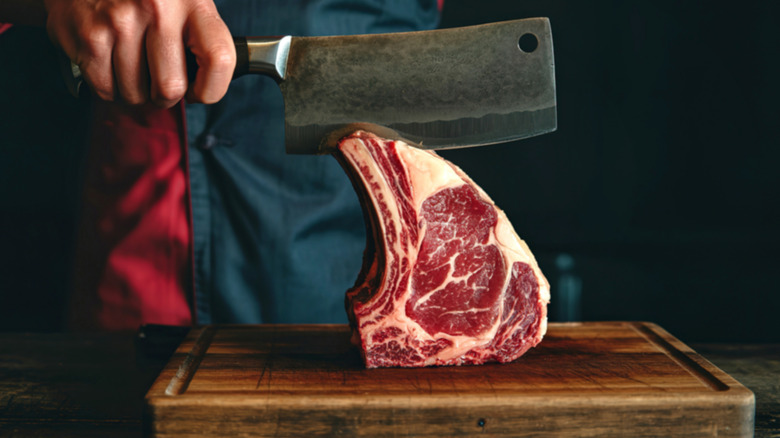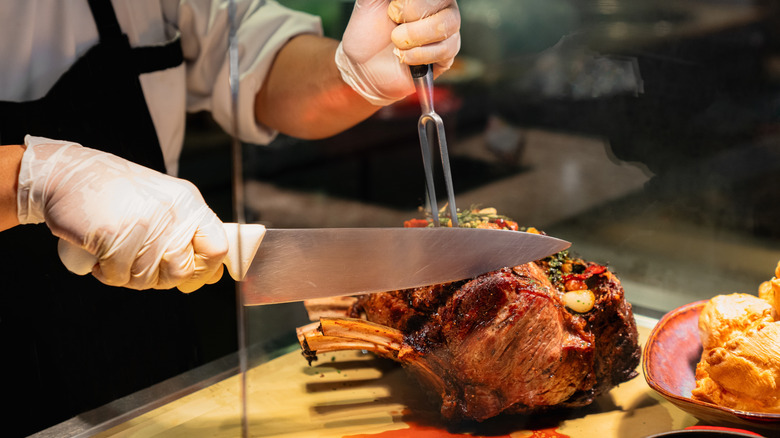How To Adjust Cooking Prime Rib At High Altitude
You've probably noticed that cooking rules change once you're above 3,000 feet. Take a look at prime rib, for example. When cooked normally at high elevations, it can seem to suffer from altitude sickness, going from perfectly tender to dry — and it's not due to your skills. Cooking at altitude can be tricky, so Food Republic spoke with Chef Jason Morse, Ace Hardware's barbecue expert, to find out how to adjust prime rib cooking at high elevations. As someone who lives at nearly 6,000 feet, he knows what he's talking about.
"I tend to see more issues with meat drying out faster due to the altitude or elevation," Morse told us. "The reason for this is that at higher elevation[,] the boiling point of water is reduced." High elevations have lower atmospheric pressure. This means that it's easier for water molecules to turn to vapor, allowing moisture to evaporate faster. For example, at sea level, water boils at 212 degrees Fahrenheit, but at 5,000 feet, it boils at just 203. The result? Prime rib loses its succulent juiciness much faster, even if you follow the tried-and-tested recipes and methods that work perfectly at lower altitudes.
To solve this problem, "[You can] prevent any moisture loss by rubbing the meat with bacon fat before seasoning or adding a small water pan to [your] grill or smoker," Morse told us. Bacon fat is already used in many dishes for its smoky flavor, while the water pan creates a humid environment, helping to prevent the prime rib from drying out. If you want your bacon fat to last longer, make sure to strain it before you store it in the fridge.
Other factors chefs should consider
When adjusting your cooking to suit the conditions of high altitudes, you should also "keep the temps maybe 25 degrees lower during cooking to prevent moisture loss," Jason Morse told us. In the oven, the ideal temperature for prime rib is around 250 degrees Fahrenheit, so adjust accordingly. You should also look for a cut that features marbling — the intramuscular fat that renders out when exposed to heat, basting the meat with flavor and, more importantly, preventing it from drying out. When you want to find the perfect steak at the grocery store, choose something nice and thick and always check the USDA grade.
No matter how you prepare your beef or what cut you're using, it's crucial to let it rest after cooking. This allows the muscle fibers to relax and reabsorb moisture, keeping the meat tender and juicy. While the typical resting period for a prime rib is 25 to 30 minutes at sea level, Morse explained, "Give it maybe 5 [to] 7 minutes longer to rest before slicing into it."
"I don't like to cover tightly when resting, if I cover at all," Morse added. "I may lay some foil over the meat to help hold moisture on the surface of the meat, but allowing some escape on the sides, [as] this will keep the resting temp from climbing and carrying over too far." When the meat is covered too tightly, it can continue to cook through a process called carry-over cooking, becoming dry and tough. This is why David Rose recommends that you pull prime rib from the oven early.


